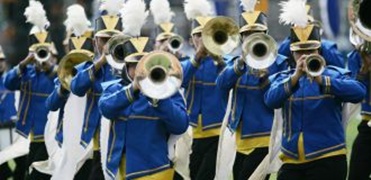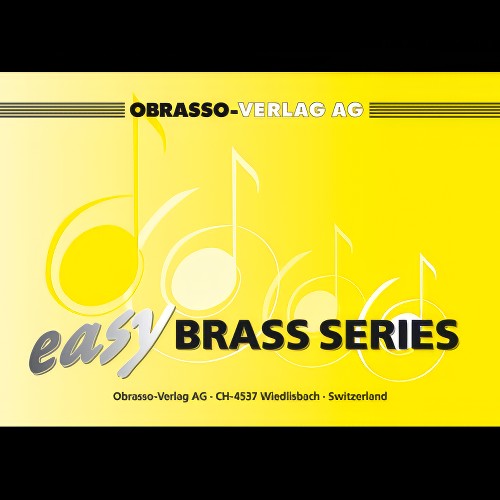Results
-
 £74.99
£74.99Suite for Brass (Brass Band - Score and Parts) - Bulla, Stephen
Suite for Brass features three colourful chorales arranged for brass band. Following a brilliant version of O Worship the Lord, Amazing Grace is introduced. This is followed by How Firm a Foundation, arranged in a march style, which brings the work to a thrilling climax.Duration: 4:45
Estimated dispatch 7-14 working days
-
 £54.20
£54.20AMPARITO ROCA (Spanish March) (Brass Band) - Texidor, Jamie - Woodfield, Ray
Duration: 2'36". Grade: medium. Recorded on OBRCD945 Flyin' to the Skies (Black Dyke Band).
Estimated dispatch 7-14 working days
-
 £38.80
£38.80BATTLE ROYAL MARCH (Brass Band Marchcard) - Jewell, Fred - Woodfield, Ray
Duration: 1'53". Grade: easy. Recorded on OBRCD946 The Way we Were (Cory Band).
Estimated dispatch 7-14 working days
-
 £35.00
£35.00BLUES ON THE MARCH (Brass Band) - Barry, Darrol
Traditional marches are great, but sometimes you want something different to kick off your concert. This piece gives your band a chance to get into the 'swing' of things, based on the traditional twelve bar blues it features a contrasting middle section with a trombone trio and a flugel (cornet) obligato. Grade: 4th section +. Duration: 3:50
Estimated dispatch 7-14 working days
-
 £37.95
£37.95CAMBERLEY (Brass Band) - Richards, Goff
March. Duration: 3:18 Recorded on Polyphonic QPRL222D And the Band Played On
Estimated dispatch 7-14 working days
-
 £37.95
£37.95CENTENARY MARCH (Brass Band) - Vinter, Gilbert
Duration: 6:13 Recorded by Williams Fairey Engineering Band on Polyphonic QPRL058D Spectrum
Estimated dispatch 7-14 working days
-
£59.99
Constellation (Brass Band - Score and Parts)
This easy concert march can be divided into two parts. The first part, which is rhythmical, beautifully contrasts with the second part, which is lyrical. Each section of the band has its turn in this concertmarch, which, in spite of its easy level of difficulty, deserves the designation "five-star piece." 03:45
Estimated dispatch 7-14 working days
-
 £42.95
£42.95GOLDEN ARROW (March) (Brass Band) - Howarth, Elgar
Recorded by the Foden's Richardson Band on Polyphonic CD: QPRL224D MASTER BRASS (Volume 17)
Estimated dispatch 7-14 working days
-
 £32.95
£32.95GRAND MARCH from Aida (Brass Band) - Verdi, Giuseppe - Wright, Denis
Recorded on Polyphonic QPRL060D Master Brass Volume Four (1993 All England Masters), Polyphonic QPRL056D National Brass Band Championships of Great Britain and Gala Concert - 1992
Estimated dispatch 7-14 working days
-
 £50.90
£50.90Harlem Rag March (Brass Band - Score and Parts) - Turpin, Tom - Fernie, Alan
Slightly reduced Brass Band instrumentation (no rep cornet, no 2nd horn, no 2nd trombone part)
Estimated dispatch 7-14 working days
